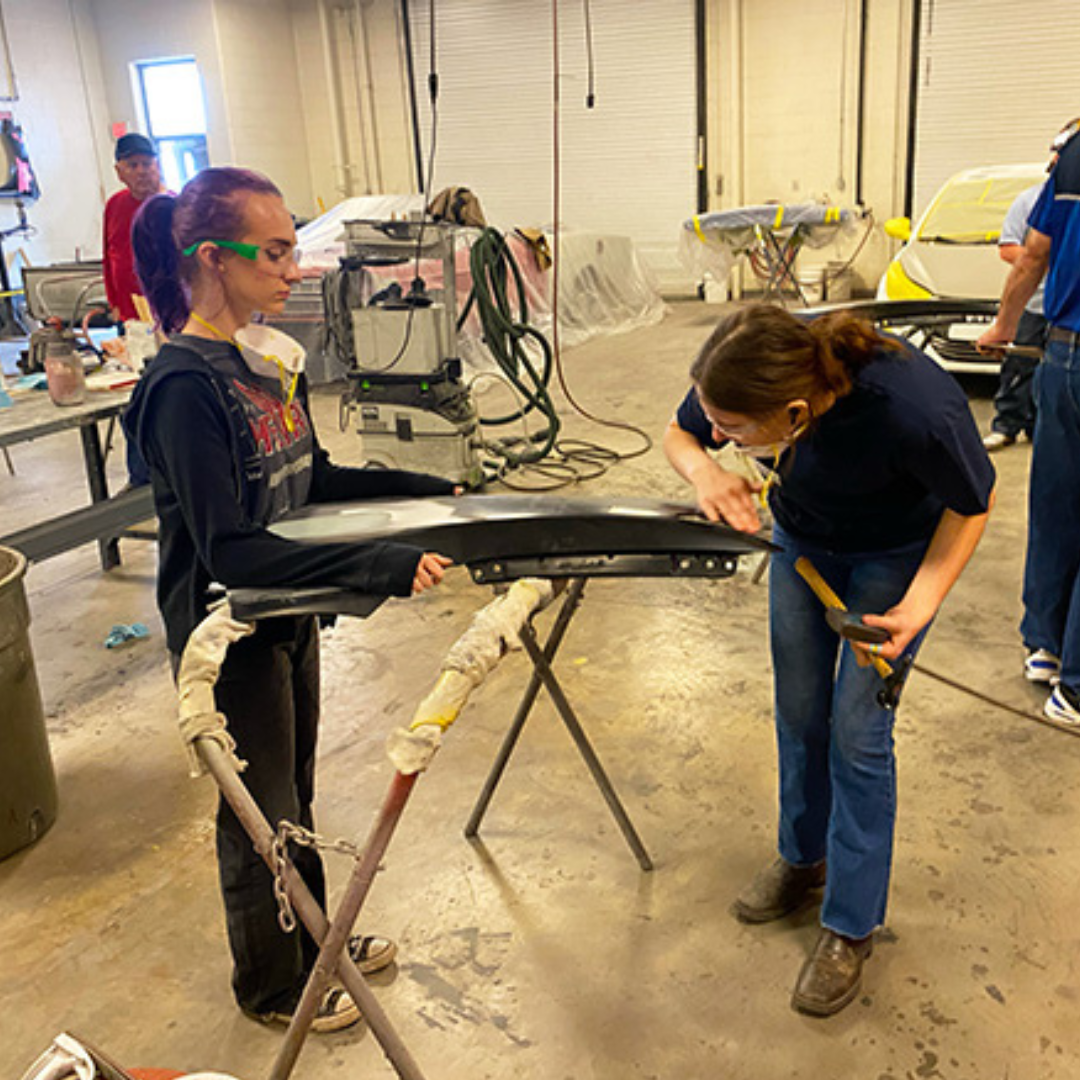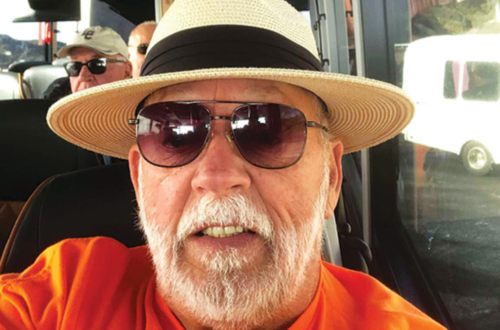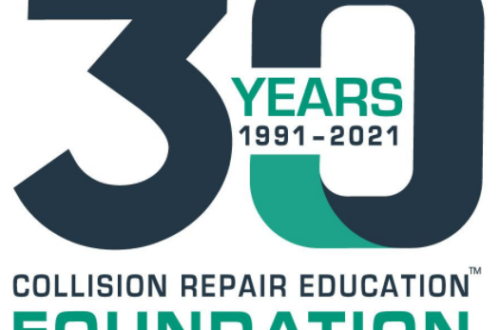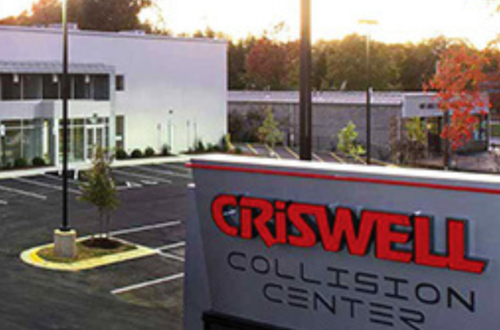
WMABA School Profile: Washington County Career and Technical Education Center
Published in Hammer & Dolly – Thomas Greco Publishing
When it comes to attracting young people to collision repair – and retaining their interest in the field – no tool is as valuable as engagement from local industry professionals!
 That certainly seems to be the case at Washington County Career and Technical Education Center (WCCTEC) in Abingdon, VA. “Industry involvement is always a plus for our students,” reports WCCTEC Auto Body Repair Instructor Brian Casey. “We sometimes have guest speakers from the local industry, which gets students thinking and talking about their future, which is always a positive. We try to take three or four field trips per year because these are good team building activities and morale boosters. Last year, we toured the Volvo truck factory, and it was a good experience for all. It is always a benefit for students to hear career information from different sources other than their daily teacher.”
That certainly seems to be the case at Washington County Career and Technical Education Center (WCCTEC) in Abingdon, VA. “Industry involvement is always a plus for our students,” reports WCCTEC Auto Body Repair Instructor Brian Casey. “We sometimes have guest speakers from the local industry, which gets students thinking and talking about their future, which is always a positive. We try to take three or four field trips per year because these are good team building activities and morale boosters. Last year, we toured the Volvo truck factory, and it was a good experience for all. It is always a benefit for students to hear career information from different sources other than their daily teacher.”
WCCTEC collision students attend class for about two and a half hours each day over the course of two school years with an option to take a third year of classes if there’s space available and the instructor approves. First-year students attend classes in the morning, and during the afternoon, “Third-year students train with the second-year students and then transition to work-based learning by mid-year,” Casey explains.
Classes typically consist of 16 to 18 students, according to Casey. “This has not changed much in my almost 16 years of teaching. In our area, automotive classes are generally very popular. We have an application process and make efforts to place students who are genuinely interested in automotive work and not just looking for a place to hang out.”
WCCTEC helps seniors and recent graduates find industry employment with the assistance of two coordinators from Jobs for VA Graduates. “The addition of the second coordinator in the past two years has improved our industry involvement and has helped open some new opportunities for our students,” shares Casey. “I also have contacts with all the major body shops in our surrounding area. Most students can get an internship in one of the local body shops with just the instructor’s recommendation.
“We also have a job shadowing program where students can visit and work with a professional in a body shop for a few days or weeks to get a better idea of what the actual career is like,” he adds. “The biggest issue with placement is the fact that our school is in a somewhat rural area, and there are not as many choices for employment as in large urban areas.”
In order to keep his program up-to-date on the latest industry trends and needs, Casey relies on the school’s automotive advisory board, which meets twice each school year. Its current 10 members include a service manager, body shop manager, technicians, estimators, a service writer and a tool vendor.
“The advisory board is stronger now than at any time in my career,” Casey boasts. “The board helps us in many ways. They keep us up-to-date on the latest equipment and practices used in their businesses as well as give feedback on employees who have come through our program. I like to have some of my better performing students attend the advisory meeting each year. Advisors also come to the school during school hours from time to time and speak to our students about careers in their field.”
Casey finds his career as an instructor to be very rewarding. “One of my favorite things is SkillsUSA competitions. This is a true test of the student’s skills without assistance from the instructor. It is also a huge motivator for students. When they win or place, it is good to see them get excited and motivated for the next level. I am a lead SkillsUSA advisor at our school and get to work with the SkillsUSA officers. This is rewarding in the fact that I get to watch students become proficient public speakers, planners and leaders.”
He also finds it “rewarding when I see students master tasks, such as painting or welding, that they were unable to accomplish before taking this class. Sometimes, they learn that they really enjoy and are good at things they did not think they could do. Another huge reward is when students are successful in the workplace and make a good living using skills that they learned in my class.”
Of course, no job is without its challenges. “All in all, I am very satisfied with my job as a collision instructor; however, this job is challenging, and sometimes success is difficult to measure,” Casey acknowledges. “I have the same challenges as most other teachers: managing time and resources. Instructional funds have not kept pace with inflation. Shop supplies have increased at rates not comparable to other commodities. My students do a high percentage of live work on customer vehicles, which I prefer because it motivates students more than practicing. Having said that, I could always use more supplies/funds for practicing basic skills. When it comes to placing students in careers, one challenge is having them take retail and factory jobs that pay better on the front end but do not lead to a rewarding career. It is difficult for them to look at an apprenticeship in a shop as getting training while being paid.”
Although Casey has yet to “take full advantage” of everything WMABA has to offer since the school is not located near most of the association’s member shops, he finds WMABA’s monthly magazine to be very useful. “I read Hammer and Dolly every month and distribute copies to my students. This information keeps me up to date on industry trends and standards.”




